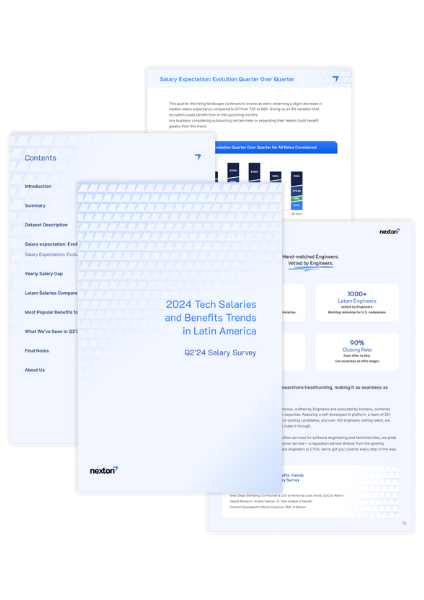Live coding in an interview can be a huge source of anxiety for many developers. Most aren’t used to having somebody looking over their shoulder and it’s common for candidates to draw a blank during the challenge or get so flustered that they make a basic mistake.
What’s more, live coding tends to be the preferred technical interview test for companies these days, and mastering this type of challenge is essential to your career. Here’s how you can crack the live coding interview in order to showcase your skills confidently!
Do’s for the live coding challenge
1. Practice out loud with a friend (or pet)
It may seem obvious, but don’t skip it: practice, practice, practice. Reviewing exercises can keep your knowledge fresh and ensure that you don’t get lost with the basics. Take online practice interview tests, but also run whiteboard challenges out loud with a friend (or pet). By dusting off your skills and knowing common terms, you’ll feel more grounded when you walk into the interview.
Moreover, it’s key to practice out loud in the specific language that the interview will be held in –especially if it’s not your native language. For instance, let’s say your native language is Spanish, and your interview is with a U.S. company. Ideally, you’ll be practicing the exercises in English. This will boost your confidence and thoroughly prepare you for your interview.
2. Scour the job description for clues on potential test questions
If you’re not certain what type of questions you might be asked, go back to the job description. Often by looking at the skills that the role requires, you’ll get clues into what sort of abilities you may be tested on. When in doubt, look up drill exercises online for your particular programming language.

3. Get in the right mindset
Remember that the remote live coding challenge is an opportunity to showcase your skills, especially if you don’t have more formal credentials. Take advantage of this chance by putting your best foot forward. While nobody expects you to get the code 100% perfect, having a can-do attitude will impress the interviewer no matter what.
4. Show off your communication skills
You might not solve the full coding challenge, but you sure can ace communication. As you complete the coding challenge, show off your communication skills by asking relevant questions and clarifying any assumptions. This is ideal for displaying how you think and making sure you’re on the right track from the start.
In addition, signpost what you’re doing to the interviewer. While it’s extremely difficult to code and talk at the same time, explain what you’re up to. For example, if you’re about to complete a coding step, here are some signposting phrases you can use:
- Now I’m going to… and I’ll connect back in a moment to show you how I did it.
- As you can see, here I…
- Next, I need to…
- Give me a minute to finish and I’ll walk you through my work.
Communicating these transitions between writing code and explaining it shows the interviewer you can handle future client interactions and meetings, too.
Don’ts for the live coding challenge
1. Don’t drop out of the recruitment process because of a live coding challenge
We get it: live coding challenges can be really nerve-racking. But often it’s worse in your head and the interview itself isn’t as scary as you imagined.
In addition, the more you do live coding, the more confident you’ll feel. Stepping out of your comfort zone from the get-go can help you boost your career in the long run.

2. Don’t hit the ground running
When you’re nervous, it’s normal to want to jump right into the problem. Take a step back and make sure you have all the information you need. Engage with the interviewer first: ask questions, consider the key points, clarify assumptions and discuss out loud how you’re going to approach it.
Once you have an initial sense of what to do, then go ahead and start coding! Just be sure to explain what you’re doing as you go along.
3. Don’t overcomplicate matters or hide mistakes
Live coding challenges are naturally limited by time and scope. Don’t try to cram in a complicated solution and instead stick to a practical one that works – even if it’s sub-optimal.
The most important thing is to show your thinking and explain why you made the decisions you did. At the end of the exercise, you can even briefly explain a more optimal solution.
Don’t forget to debug your code, too! If there are any mistakes, there’s no need to hide them. Simply explain what went wrong and how you discovered the problem.
4. Don’t panic if you get stuck
Finally, anything can happen in a live coding challenge. If you get stuck, be honest about what’s holding you up and demonstrate as much of your thought process as possible.
Usually, the interviewer will give you a hint on how to move forward, so you can continue with the challenge. Ultimately, you’ll get credit for trying and showing the reasoning behind your solution.

Ace your next remote live coding interview
While live coding can be tough, it’s a major chance to show off your skills and connect with the interviewer. With these tips and lots of practice, you can boost your confidence and land the remote job you’ve been looking for!
At Nexton, we connect top-tier software engineers based in Latin America with remote, long-term job opportunities in the U.S. and beyond. Get in touch to find your dream job with us!


